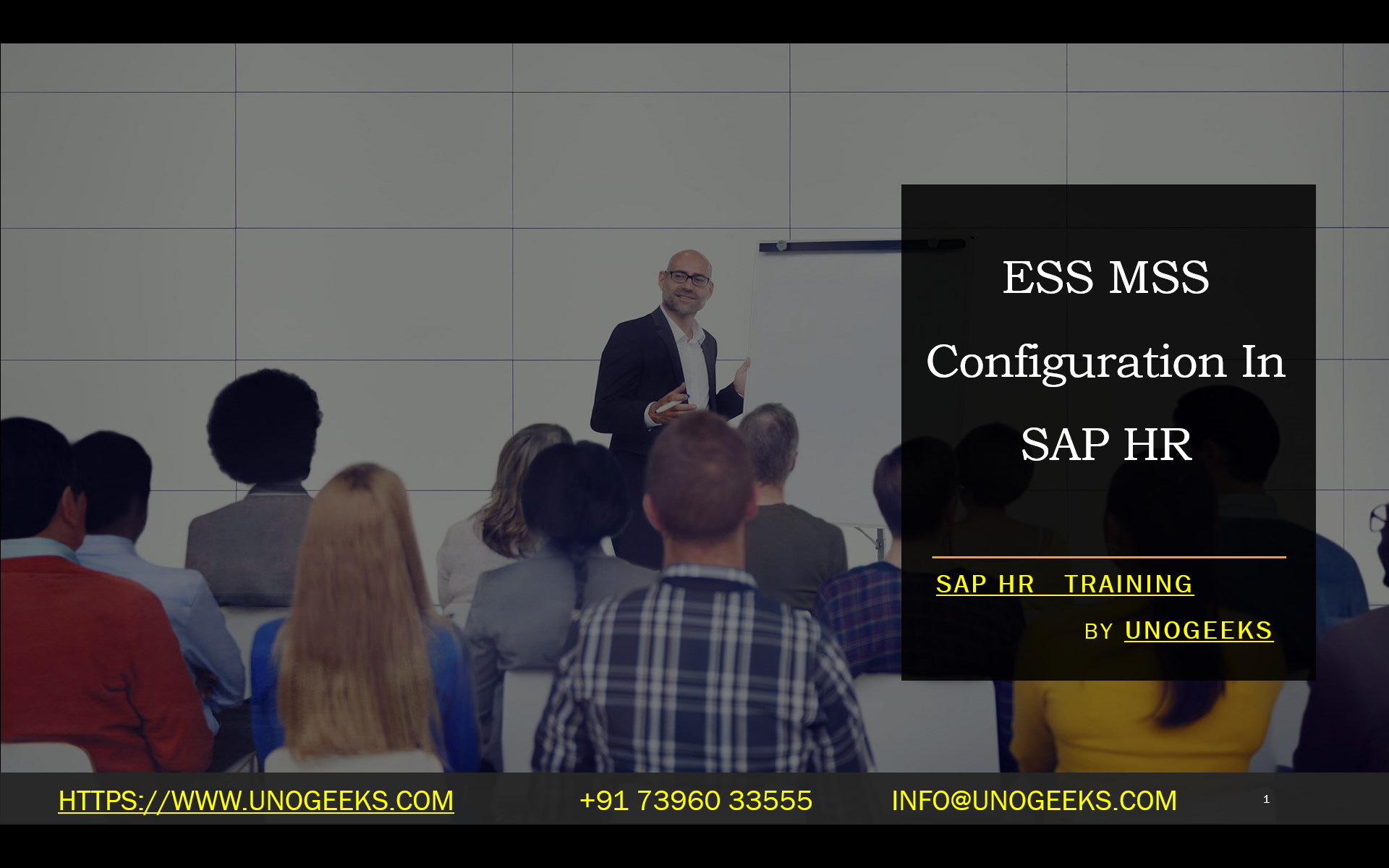ESS MSS Configuration In SAP HR
Configuring ESS/MSS in SAP HR: A Comprehensive Guide
Employee Self-Service (ESS) and Manager Self-Service (MSS) are potent components of the SAP HR (Human Resources) suite. They allow employees and managers to access and manage HR-related data and processes directly, improving efficiency and reducing administrative burdens. Successfully configuring ESS/MSS requires careful planning and execution. This blog will guide you through the essential steps.
Understanding ESS and MSS
- ESS (Employee Self-Service): Provides employees with a portal to:
- View and update personal information (address, bank details, etc.)
- Access payslips and tax documents
- Request leave and time off
- View company announcements
- Enroll in benefits
- Participate in training programs
- MSS (Manager Self-Service): Gives managers tools to:
- Approve or reject employee leave requests.
- Manage team attendance and work schedules
- Carry out performance appraisals
- Access HR reports relevant to their team
- Initiate hiring processes
Prerequisites
- SAP NetWeaver Portal: ESS/MSS runs within the SAP NetWeaver Portal environment. Ensure this is installed and functional.
- Business Packages: Download the relevant ESS and MSS Business Packages from the SAP marketplace suitable for your SAP version.
- System Landscape: Understand your SAP system landscape clearly, including your backend HR system (ECC) and any other integrated systems.
Configuration Steps
- Business Package Installation: Install the downloaded ESS and MSS Business Packages into your SAP NetWeaver Portal.
- System Aliases: Create system aliases in the portal that point to your backend HR system. These aliases enable communication between the portal and the HR data.
- Content Administration: Configure the ESS/MSS iViews (individual display components) and worksites to tailor the user interface and available services in the portal.
- User Roles and Authorizations: Define user roles for employees and managers with the appropriate permissions to access different functionalities within ESS/MSS.
- Workflows: Customize existing workflows (e.g., leave approval processes) or create new ones to align with your business requirements.
- Integration with SAP Backend: Ensure seamless integration between ESS/MSS and your backend SAP HR system by configuring RFC connections and other communication settings.
- Personalization: Enable end-user personalization options where applicable, allowing employees and managers to customize certain aspects of their portal view.
Additional Considerations
- Single Sign-On (SSO): Implement SSO to provide a seamless login experience for users, eliminating the need to maintain multiple passwords.
- Mobile Enablement: Configure ESS/MSS to be accessible from mobile devices, extending self-service capabilities.
- Change Management: Conduct training and communication campaigns to ensure the smooth adoption of ESS/MSS by employees and managers.
Troubleshooting and Best Practices
- Thorough Testing: Rigorously test all configured functionalities before deployment in the production environment.
- User-Centric Design: Focus on user-friendly navigation and an intuitive interface when configuring the portal.
- Security: Implement robust security measures to protect sensitive HR data.
- Regular Updates: Keep your ESS/MSS installation up-to-date with the latest patches and security updates.
Conclusion
You can successfully implement ESS/MSS in your SAP HR landscape by carefully following these configuration steps. This will empower your employees, streamline HR processes, and enhance the overall efficiency of your HR operations.
Conclusion:
Unogeeks is the No.1 IT Training Institute for SAP HR Training. Anyone Disagree? Please drop in a comment
You can check out our other latest blogs on SAP HR here – SAP HR Blogs
You can check out our Best In Class SAP HR Details here – SAP HR Training
Follow & Connect with us:
———————————-
For Training inquiries:
Call/Whatsapp: +91 73960 33555
Mail us at: info@unogeeks.com
Our Website ➜ https://unogeeks.com
Follow us:
Instagram: https://www.instagram.com/unogeeks
Facebook: https://www.facebook.com/UnogeeksSoftwareTrainingInstitute
Twitter: https://twitter.com/unogeeks
